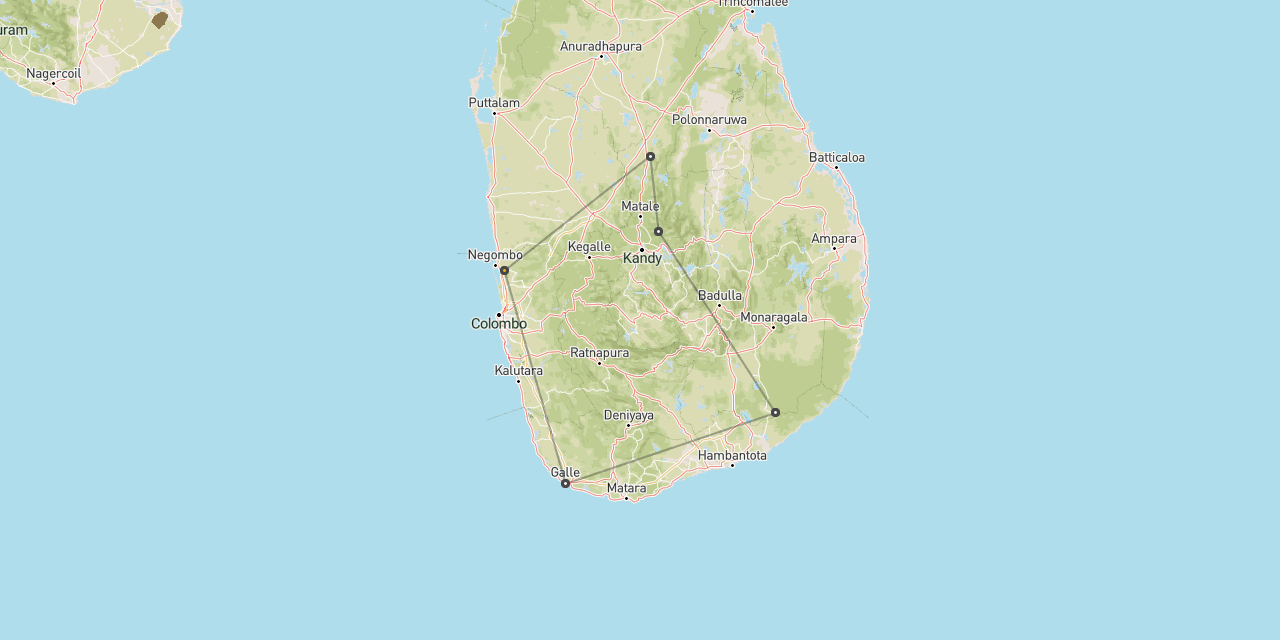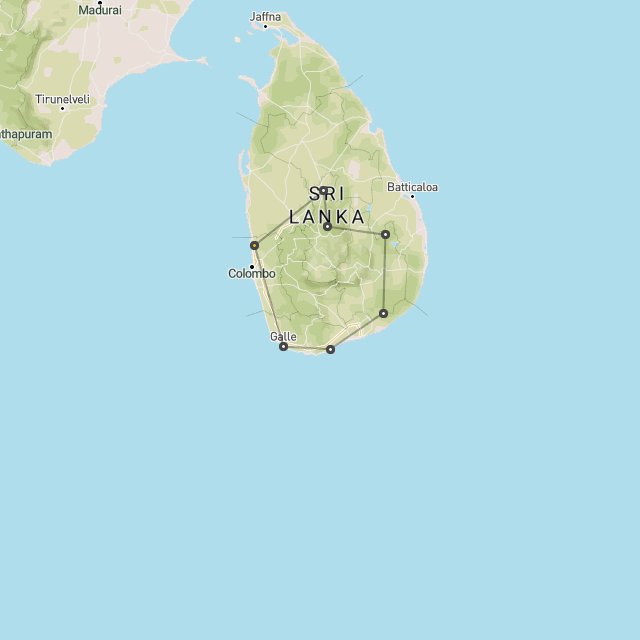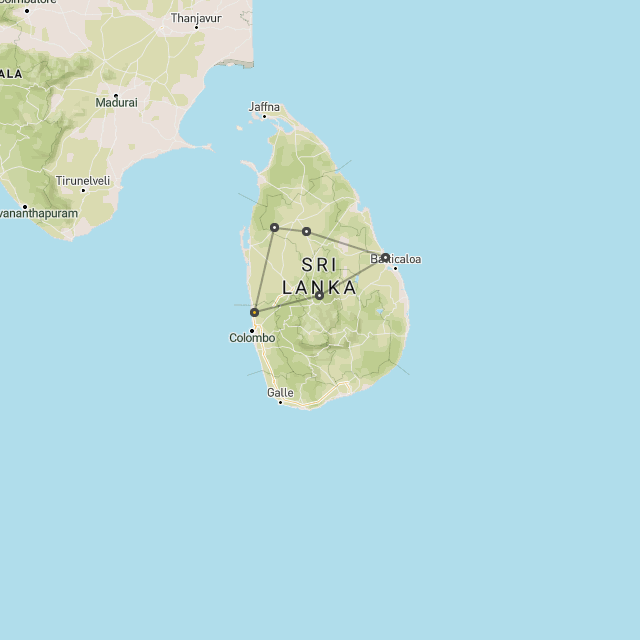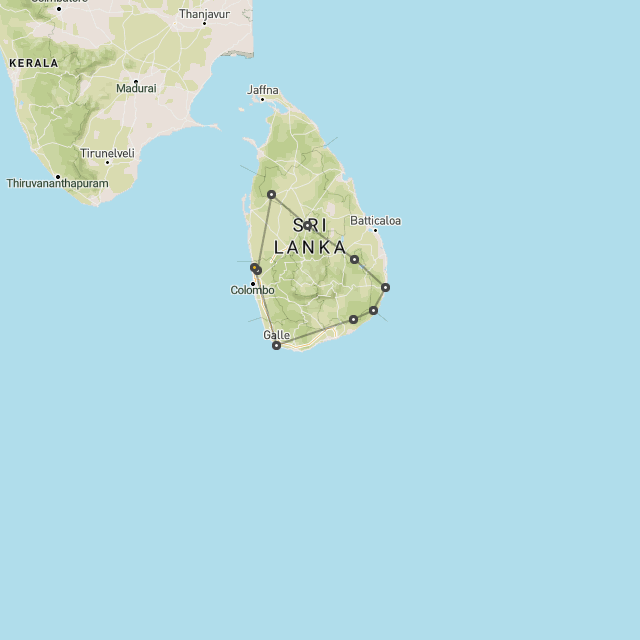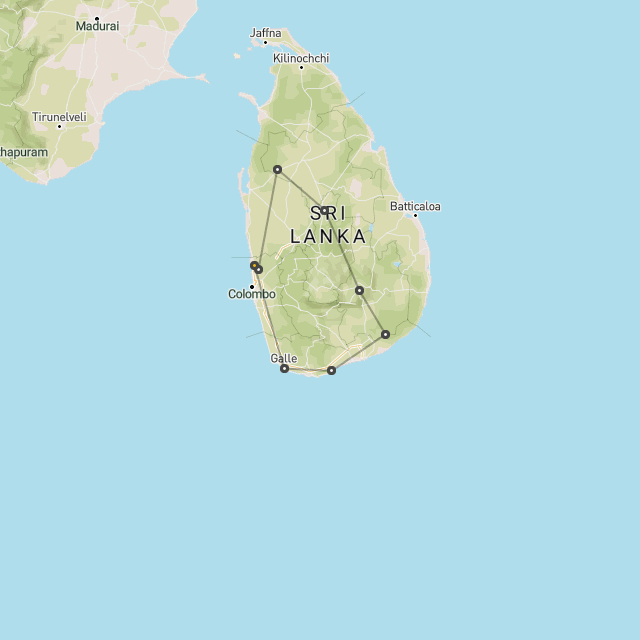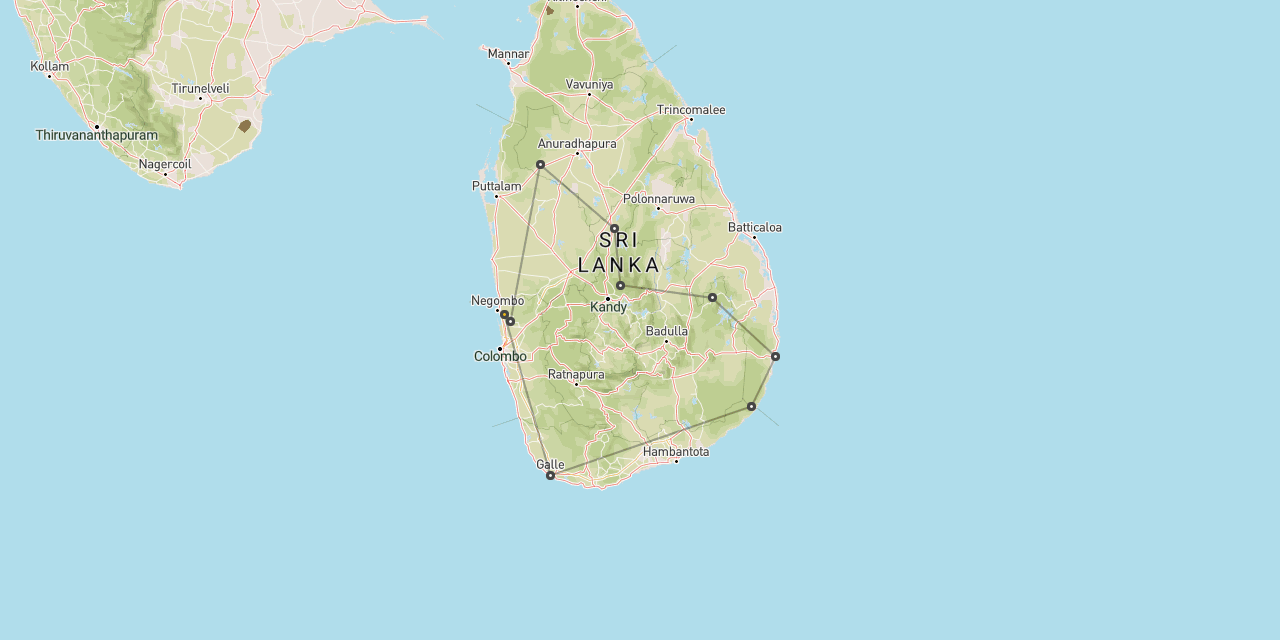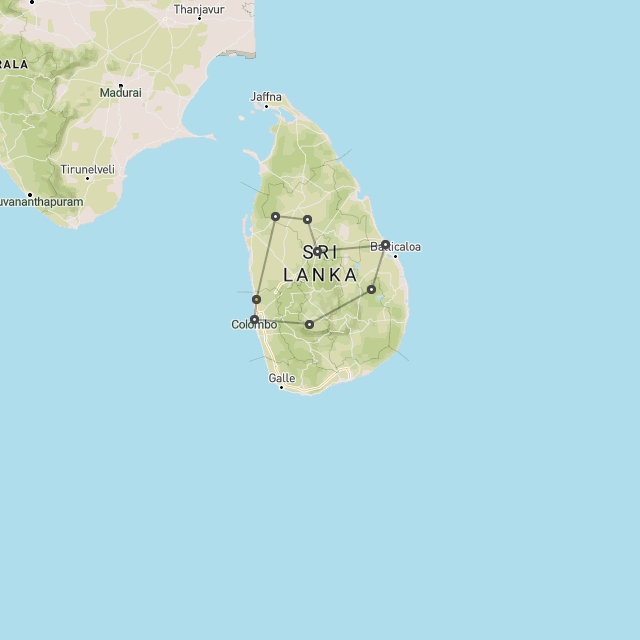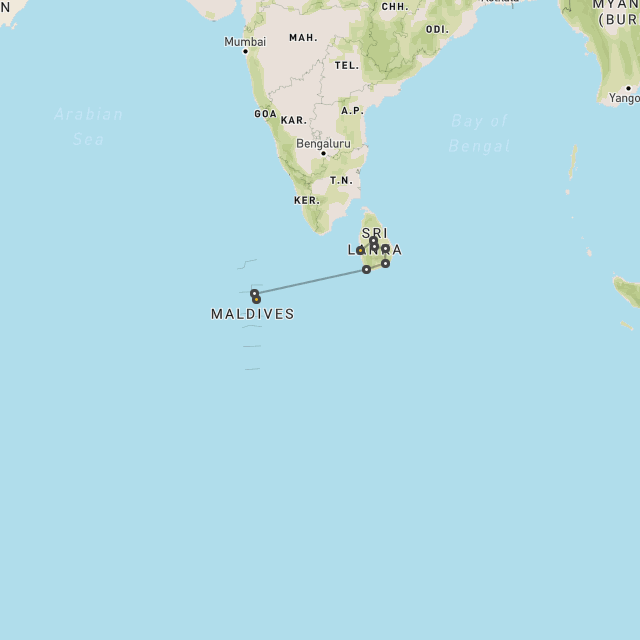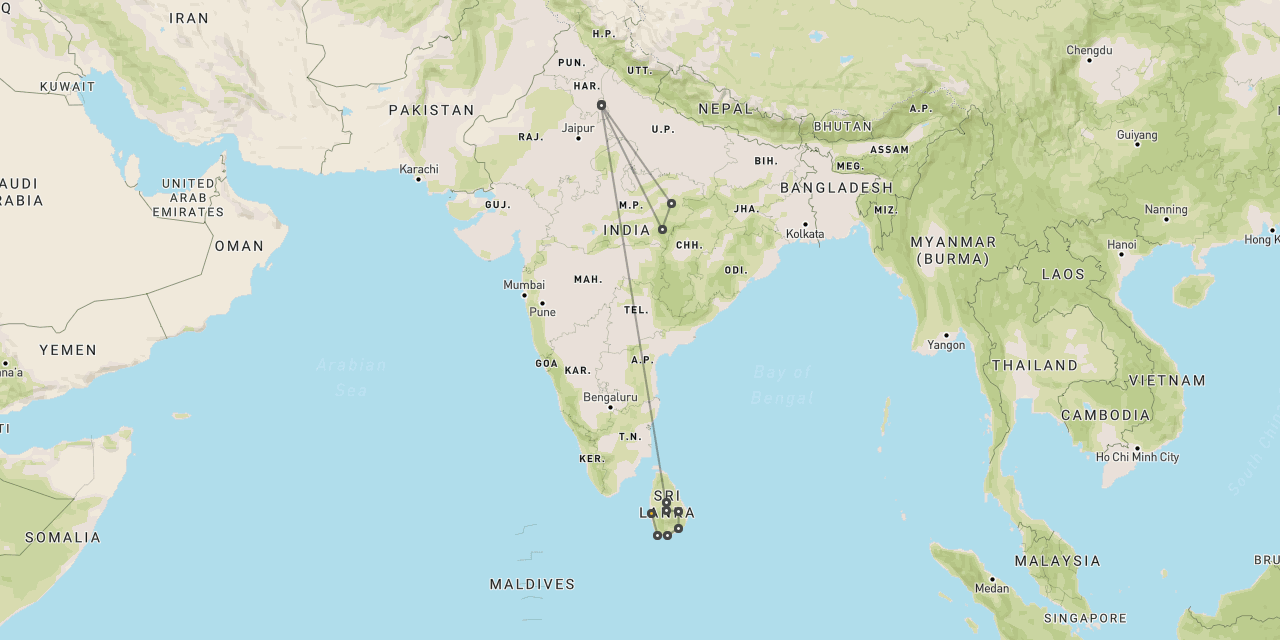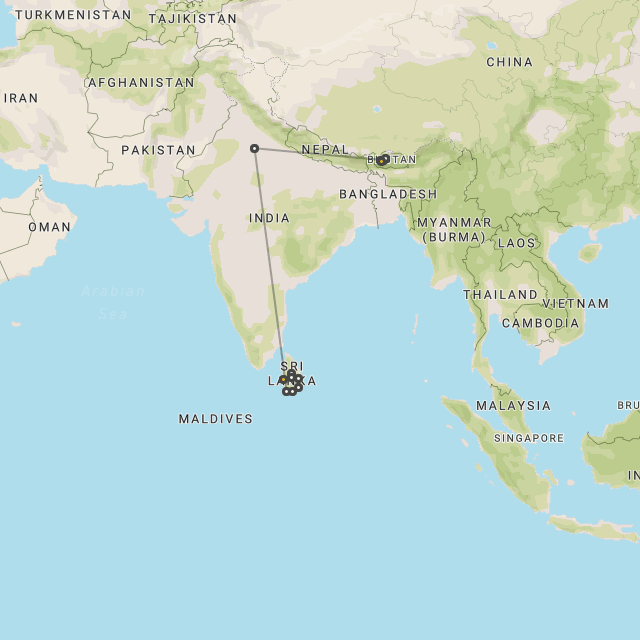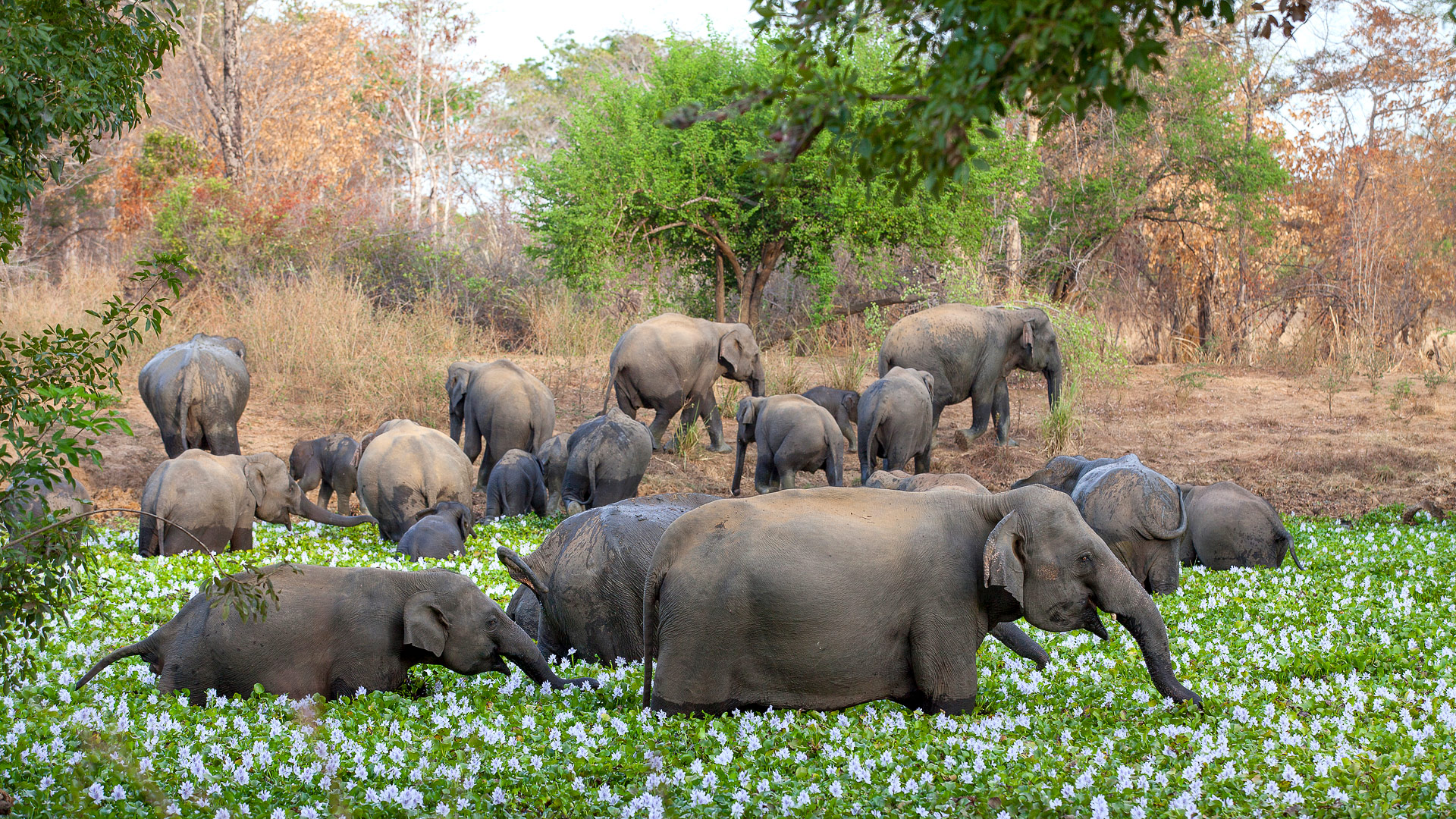
Safari in Wasgamuwa
Wasgamuwa
is a scenic elephant reserve
in the centre of Sri Lanka
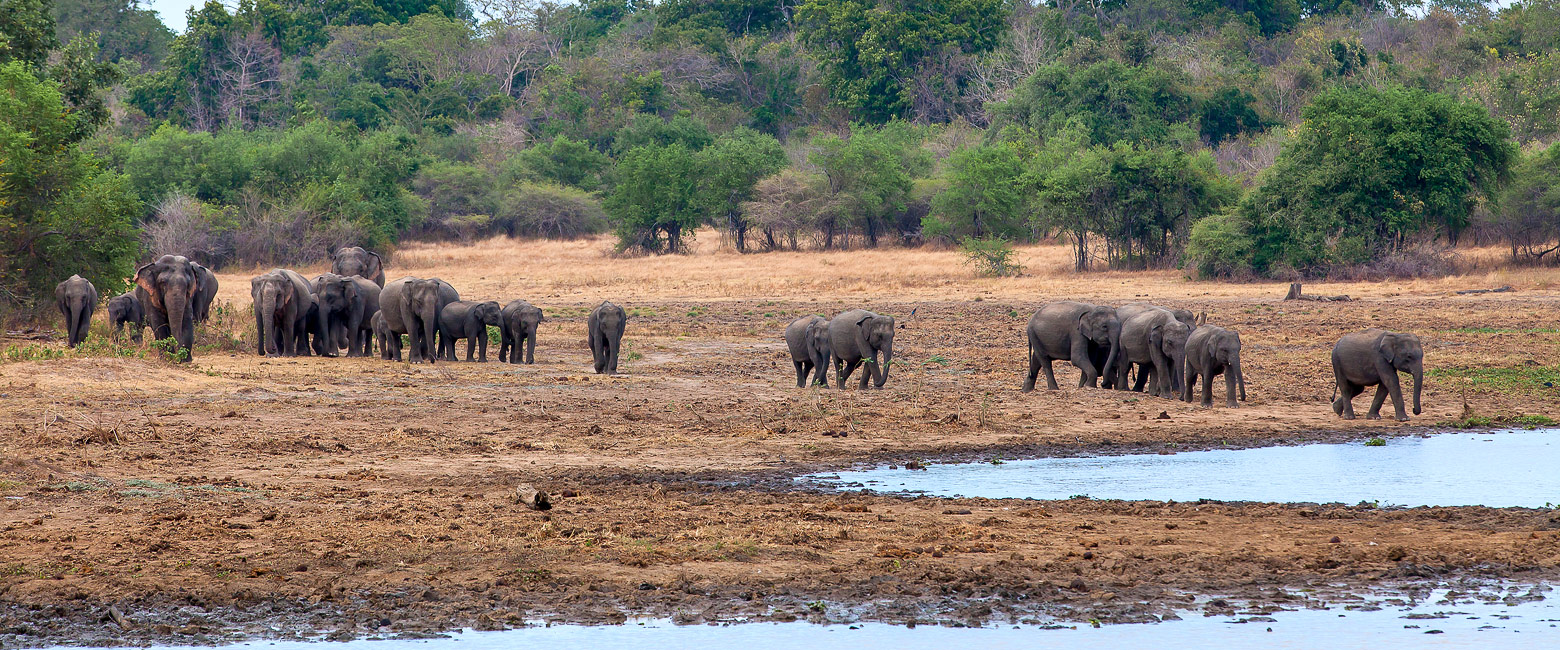
a chance of encounters with sloth bears
Wasgamuwa National Park is located in the east of Sri Lanka, around 100km to the northeast of Kandy.
At just 393 sq km (151 sq mi), Wasgamuwa is a relatively small conservation area, but forms part of a larger network of reserves in this part of the country, some of which are contiguous.
The reserve is low-lying, certainly by comparison of the mountainous areas just to the south. The highest elevation here is Sudu Kanda, which only reaches 470m (1540’).
The undulating landscape is a mix of broad open grasslands, surrounded by large areas of dry evergreen forests, with a good network of rivers and lakes. It’s a genuinely lovely area, one of our favourites in Sri Lanka.
Wasgamuwa is home to 23 species of mammals, including Sri Lankan elephants (around 150 individuals), purple-faced langurs, toque macaques, water buffalos, Sri Lankan axis deers, Sri Lanka leopards, sloth bears and golden palm civets.
The elephants here are noticeably larger than in other reserves. Locally known as ‘marsh elephants’ they commonly reach 4m (13’), compared with the more normal 2.75m (9’) of other areas. They can be quite aggressive, especially during the breeding season, when large matriarchal herds interact with lone breeding bulls.
The name Wasgamuwa actually means ‘forest of the sloth bear’ in the local Sinhala language, but they are usually just as elusive here as everywhere else. The same can be said of the local leopards, which are not usually as cooperative as those down in the Yala area.
The 140 recorded bird species features 8 endemics, including red-faced malkohas and Sri Lankan junglefowls. In the wetland areas species include purple swamp-hens, purple herons, woolly-necked storks and lesser adjutants. The taller trees are home to black-winged kites, green pigeons, drongos, cuckoos and blue-faced malkohas. Out in the open sightings include peacocks, munias, weavers and blue-tailed bee-eaters.
Various features within the reserve tell of human occupation over the millenia, notably including a huge canal dating from around 1150 AD and the dilapidated columns of various ruins.
The reserve is surrounded by agricultural areas and villages, where the primary cultivation is rice paddy fields. Human-elephant conflict is a major issue in the buffer zone and makeshift elephant fences are in evidence in some areas.
Compared to Yala National Park in the south, Wasgamuwa experiences relatively few visitors, which makes it a lovely place for more experienced safari travellers to spend time.

Gallery
Map
The best time of year to visit the Wasgamuwa area is generally considered to be during the Jun-Sep northeast dry season and, to a lesser extent, the Jan-Mar southwest dry season.
Temperatures are more or less constant year round, with daytime temperatures around 28C/82F, whilst the nighttime low temperatures up at a potentially uncomfortable 20C/68F.
The main issue is rainfall, which is highest Oct-Dec and has another smaller peak Apr-May. These periods are therefore usually best avoided.
Getting there
The Wasgamuwa area is usually reached by road. For our guests, this means combining it with various other locations on the island in a private guided overland safari, travelling in the company of an expert driver-guide. Popular connections include …
Kandy : 2-3 hours
Nuwara Eliya : 4-5 hours
Sigiriya : 2-3 hours
Trincomalee : 3-4 hours
Yara : 4-5 hours
The Wasgamuwa area cannot be accessed by train.
Where to stay
We presently only offer one property in this area, namely Mahoora Wasgamuwa Camp, which is an authentic tented mobile operation which can be set out for private groups of up to six guests
option to put out a mobile tented camp
let us know your thoughts about Sri Lanka
and we will help you create the perfect trip
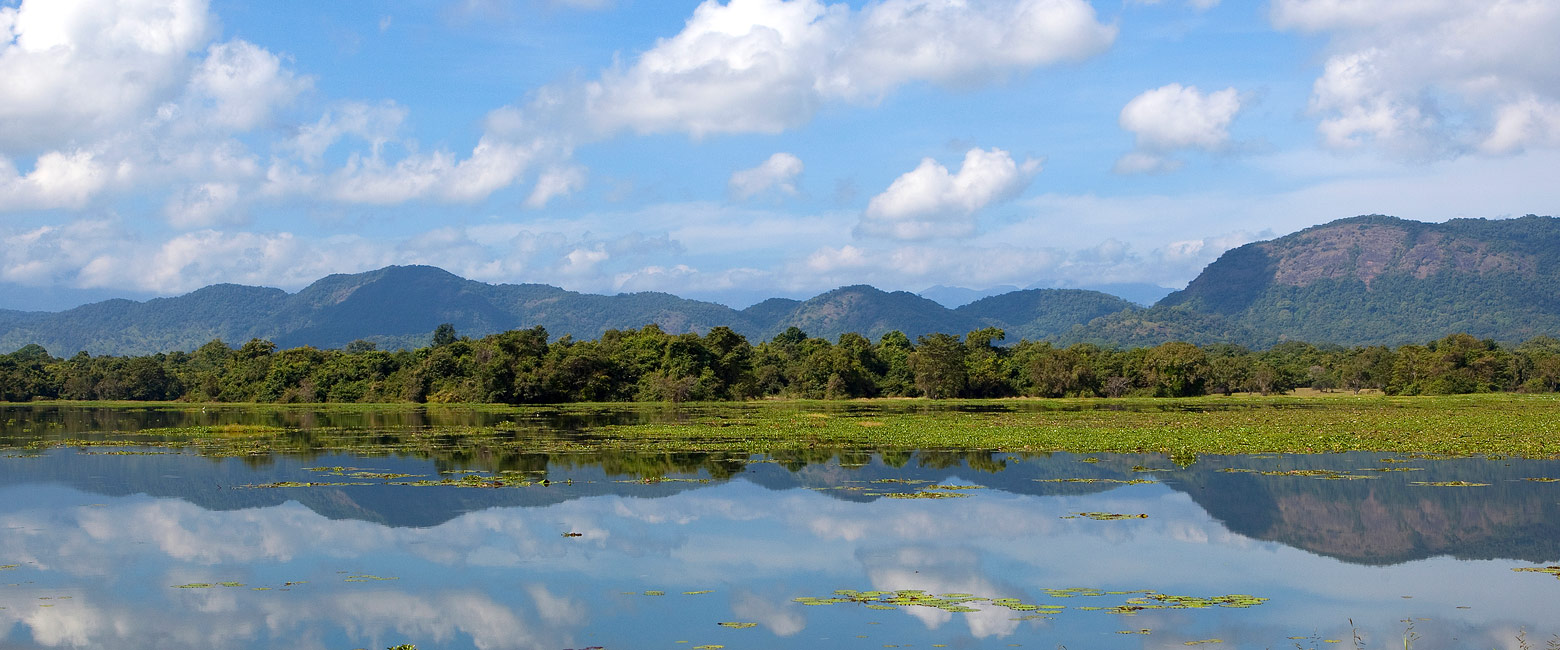
Extraordinary tailor-made adventures,
from earthy and edgy to easy and extravagant
From around USD 2500 per person, you set the ceiling

Get started on your trip
It’s never too soon to get in touch, we are here to help with every stage of your planning.
Sample Trips
Here are some of our popular trip shapes
Best Lodges
We regularly inspect and photograph all of the the best lodges, to ensure that we always recommend the most suitable options
Key Locations
Take a look around related locations. Click ‘View more’ to explore locations further afield.
Where Next?
Where Next?
We offer trips to dozens of fabulous countries.
Might one of these might be your next great adventure?

Please rotate your screen.





